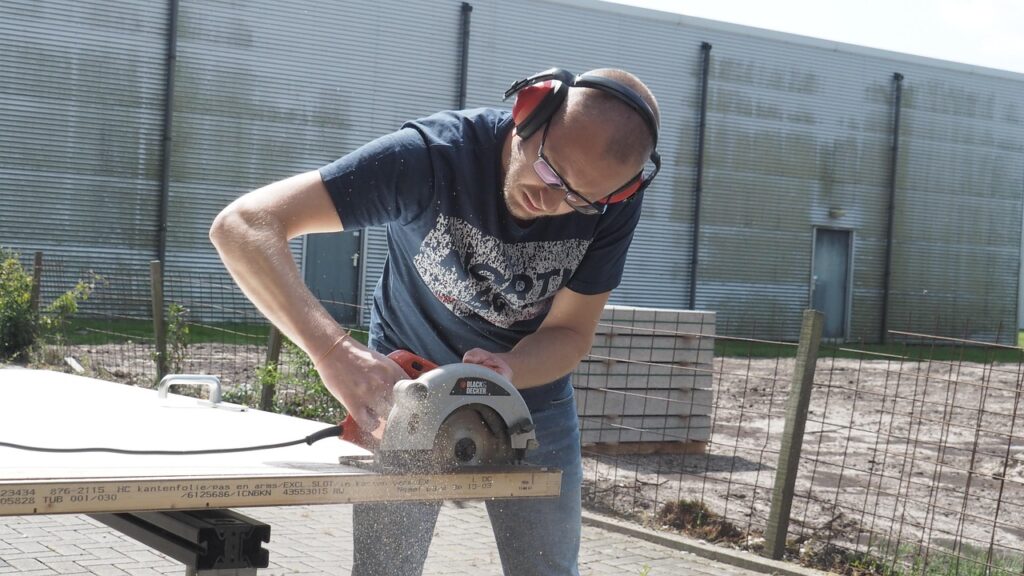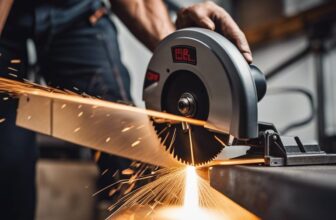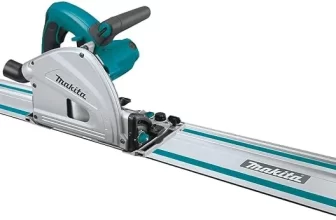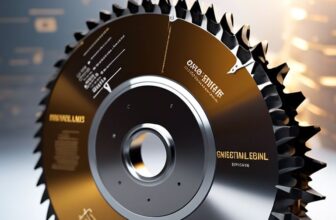In-Depth Comparison of Corded vs. Cordless Circular Saws
What are the essential differences between corded and cordless circular saws to find out which tool best suits your woodworking and construction needs.

Why Your Choice Matters
Circular saws are essential tools in woodworking, construction, and home renovation projects, providing precise cuts for various materials. The choice between corded and cordless models significantly impacts user experience, efficiency, and suitability for specific tasks. Understanding the pros and cons of each type helps you make informed purchasing decisions based on your needs, enhancing the overall quality of your projects.
Real-world example: A contractor may find that a corded circular saw allows for more consistent and powerful cuts, essential for framing and heavy lumber. Meanwhile, a homeowner doing quick weekend projects might prefer the grab-and-go convenience of a cordless model.
The importance of selecting the right circular saw extends beyond just the immediate project at hand. Factors such as weight, ease of use, and the specific materials being cut can all influence your decision. Whether you’re a professional or hobbyist, consider how often you’ll be using the tool and under what conditions, as these elements can make a significant difference in performance and satisfaction. A well-chosen saw can streamline your workflow, reduce fatigue, and ultimately lead to better craftsmanship.
Power and Performance: The Core Difference
Understanding Power Output
One of the primary differences between corded and cordless circular saws lies in their power and performance. Traditionally, corded models have been known for their superior power output, making them ideal for heavy-duty tasks. However, advancements in battery technology have allowed cordless models to narrow this gap, with some now matching the power output of corded saws, although typically at a higher cost.
Performance in action: An 18V cordless circular saw can perform impressively well when cutting through softwoods, but when it comes to tougher materials like hardwood or thick metal, corded saws often exhibit greater cutting depth and speed. The latest lithium-ion battery systems can deliver significant torque, making it possible to tackle challenging materials without losing efficiency.
Voltage Matters
Users should pay close attention to the voltage of cordless saws, as higher voltage ratings often indicate better performance and cutting capacity. For heavy-duty applications, a corded saw might still be the preferred choice, particularly when working on large-scale projects that demand prolonged usage.
Cutting Speed Consistency
The cutting speed can also vary between the two types. Corded models usually maintain a consistent speed throughout the cutting process, whereas cordless saws may experience fluctuations in power as the battery drains. This difference can affect the quality and precision of cuts, particularly in intricate woodworking tasks or when using specialized blades.
Therefore, it’s essential to evaluate your specific needs regarding power and performance when choosing between corded and cordless options.
Corded Circular Saws: Power Without Limits
Uninterrupted Performance
Corded circular saws offer distinct advantages, particularly in scenarios requiring prolonged usage. Since they’re powered by electricity, there’s no risk of battery depletion, making them ideal for large projects that involve repetitive cuts over extended periods.
Professional advantage: A professional carpenter working on a framing project can rely on a corded saw to deliver consistent, uninterrupted power, allowing for a seamless workflow.
Versatility and Options
Corded models typically come with a wider variety of power options and blade sizes, enhancing their versatility for different cutting tasks. For instance, a contractor may choose a corded saw with a larger blade diameter, such as 7-1/4 inches, to cut through thicker materials like plywood or engineered wood. The ability to use a broader range of blades allows for more specialized cutting applications, making corded saws particularly useful for professionals who need to switch between different materials frequently.
Built to Last
Another benefit of corded circular saws is their durability. These tools are often built to withstand rigorous use in demanding environments, making them a long-term investment for serious users. Many corded models, like the Dewalt DWE575, have been reported to last over a decade with proper care, providing excellent value over time. Consequently, users who prioritize longevity and reliability may find corded circular saws to be the more practical option for their needs.
Cordless Circular Saws: Freedom to Move
Modern Technology Advantages
Cordless circular saws bring a level of convenience and mobility that’s hard to beat. Many modern cordless models now feature brushless motors, which offer greater efficiency and longer battery life compared to older brushed motors. This advancement allows users to tackle more tasks without the constant need to recharge.
Quick project example: A homeowner doing a quick renovation may appreciate the ease of grabbing a cordless saw to make cuts without worrying about finding an outlet.
Perfect for Tight Spaces
Cordless saws excel in tight spaces, making them preferable for intricate cuts and detailed work. For instance, a craftsman working on a remodeling project may find a cordless model easier to maneuver in a cramped attic or basement. This ability to navigate smaller areas can significantly enhance productivity, especially when working on delicate tasks that require precision.
Smart Technology Integration
Furthermore, some cordless models incorporate innovative smart technology that adjusts the blade speed and torque based on the material being cut. For example, advanced models can detect the density of the material and optimize performance accordingly, leading to cleaner cuts and less strain on the user. This feature is particularly advantageous for users who work with a variety of materials, as it minimizes the risk of damaging both the material and the tool.
When to Use Each Type
Best Uses for Corded Circular Saws
Corded circular saws are best suited for professional settings where power tools are used continuously, such as construction sites and carpenter shops. They’re particularly effective for cutting large sheets of plywood or framing lumber, where speed and cutting power are critical.
Professional scenarios:
- Construction crews framing walls with repetitive cuts in a single location
- Metalworkers cutting through steel sheets with specialized blades
- Indoor remodeling projects in workshops with reliable power access
- Heavy-duty tasks involving thick hardwood or metal materials
Corded saws are also beneficial for users who engage in tasks that involve heavy-duty material. The uninterrupted power supply of corded models significantly enhances efficiency and safety in such applications. In a workshop environment, using a corded saw can facilitate efficient work on several projects simultaneously, as users can operate the tool for longer periods without needing to recharge a battery.
Best Uses for Cordless Circular Saws
In contrast, cordless circular saws shine in home improvement projects where quick and easy setups are necessary. They’re particularly effective for outdoor projects, such as landscaping or deck building, where access to power outlets can be limited.
Ideal scenarios:
- Homeowners building outdoor decks or structures
- Quick repairs or adjustments requiring immediate use
- Mobile contractors moving between job sites
- DIY projects in areas without convenient power access
Quick work example: Consider a DIY enthusiast who needs to make small cuts for a home renovation; a cordless model allows them to grab the tool and start working right away, without searching for an extension cord or outlet. This immediacy can be particularly valuable when time is of the essence.
Moreover, advancements in battery technology have improved the usability of cordless saws significantly. With batteries capable of lasting longer and providing more consistent power, users can now engage in more extensive projects without the frequent need to recharge. A user tackling a sizable home improvement project can confidently use a cordless saw for several hours, knowing that the battery will likely last throughout the task.
Battery Life: What You Need to Know
Runtime Expectations
Battery life is a critical factor for the usability of cordless circular saws. The average runtime can range from 30 to 90 minutes, depending on battery size and cutting conditions. As battery technology evolves, advancements like lithium-ion batteries have enabled quicker recharge times, with some models fully recharging in as little as 30 minutes. This capability can significantly reduce downtime, allowing users to resume work more quickly.
Planning for Extended Projects
To avoid interruptions during extended projects, consider investing in additional batteries. For example, a contractor might keep multiple charged batteries on hand to ensure continuous operation throughout the day, minimizing downtime and maintaining productivity. This strategy is especially useful for those working on larger jobs that require prolonged use of the saw.
Understanding Battery Drain
Additionally, be aware of your cutting habits, as more demanding tasks will drain batteries faster. Using the saw for thicker materials or at higher speeds can lead to a quicker depletion of battery life, making it essential to match the tool’s capabilities with the project’s requirements. This understanding can help you avoid frustrating interruptions and maintain a smoother workflow during your projects.
Maintenance and Durability Insights
Corded Saw Maintenance
When it comes to maintenance, corded saws typically have fewer components that can fail, leading to a more straightforward maintenance routine. They don’t require battery management, which can simplify upkeep. Regular maintenance, such as cleaning the saw and inspecting the power cord for damage, can extend the life of a corded saw significantly. Proper care can lead to a tool that serves its owner for many years.
Cordless Saw Care
Battery life in cordless saws can be extended through proper charging practices, such as avoiding over-discharge and temperature extremes. You should also familiarize yourself with battery indicators to know when it’s time to recharge, ensuring you don’t push the tool beyond its limits. For example, maintaining a battery at a moderate temperature and avoiding full discharges can contribute to its longevity.
Universal Maintenance
Regular inspection and replacement of blades are essential for both types of saws to maintain cutting efficiency and safety. Dull blades can not only reduce cutting performance but also pose safety risks if you apply excessive force. A sharp blade allows for cleaner cuts and less strain on the tool and you as the user. Develop a routine that includes checking blade sharpness and replacing them as needed to ensure optimal functionality and safety.
Safety Features to Look For
Corded Saw Safety
Safety features are paramount when selecting a circular saw. Many modern corded saws include electronic brakes that stop the blade quickly when the trigger is released, enhancing user safety. This feature is particularly important in preventing accidents and injuries, making it a critical consideration for professionals who operate their tools frequently. A saw equipped with an effective braking system can significantly reduce the risk of accidents in busy work environments.
Cordless Saw Safety
Cordless models often feature LED lights to illuminate the cutting area, improving visibility and accuracy in dimly lit spaces. This enhancement not only allows users to see their cutting line more clearly but also minimizes the chance of making mistakes that could result in wasted materials or injury. For users working on intricate projects, such as cabinetry or fine woodworking, these added safety features can make a substantial difference in both efficiency and craftsmanship.
Essential Safety Practices
Proper training in the use of safety guards and personal protective equipment is crucial for both types of saws. Ensure you’re familiar with the specific safety features of your chosen saw and how to use them effectively. This knowledge can minimize risks associated with operating power tools and promote a safer working environment overall. Understanding the importance of using safety glasses and hearing protection can significantly lower the risk of injury while working on any project.
Price Considerations
Initial Investment
Price is an important consideration when choosing between corded and cordless circular saws. While initial costs for corded saws are generally lower, long-term costs for cordless models should factor in potential battery replacements. Cordless circular saws often offer more advanced features and technology, which can justify their higher price points for users with specific needs.
Investment example: A user may find that the investment in a high-quality cordless saw pays off in terms of performance and convenience over time.
Evaluating Total Cost
When assessing the most cost-effective option, evaluate your frequency of use and the types of projects you plan to undertake. For instance, a casual user may find a corded saw more economical, while a frequent user of power tools may invest in a higher-end cordless model for the added convenience and features. It’s essential to weigh both the upfront costs and the potential long-term benefits when making a decision.
Value Beyond Price
Moreover, consider the overall value of the tool in relation to your specific needs. A higher-priced cordless saw may offer features that significantly enhance productivity, such as faster cutting speeds and advanced battery technology. By analyzing the total costs and benefits associated with both corded and cordless options, you can make a more informed decision that aligns with your project requirements and budget constraints.
Making Your Decision
Quick Decision Guide
Choose a Corded Circular Saw if you:
- Work primarily in one location with power access
- Need consistent power for heavy-duty materials
- Complete large projects requiring extended runtime
- Want lower initial cost and simpler maintenance
- Prioritize maximum cutting power and speed
Choose a Cordless Circular Saw if you:
- Work in multiple locations or outdoors
- Need mobility and flexibility
- Make quick cuts and adjustments frequently
- Work in tight or confined spaces
- Value convenience over maximum power
Final Thoughts
Selecting the right circular saw depends on various factors, including project type, frequency of use, and budget considerations. Both corded and cordless circular saws have unique advantages that cater to different user needs and scenarios. Understanding these factors helps you make informed decisions that enhance your woodworking and construction projects.
By weighing power, portability, battery life, and safety features, you can choose a saw that best fits your specific requirements. Whether you opt for the unlimited power of a corded model or the freedom of a cordless saw, the right choice will depend on your individual needs and working style.
Remember: The best circular saw for you is the one that matches your specific needs, working conditions, and project requirements. Take time to evaluate your typical projects and choose accordingly.
More info on cordless saws
Which is the best cordless circular saw?
Top 5 cordless circular saws
My review of the Galax Pro 20V cordless circular saw






